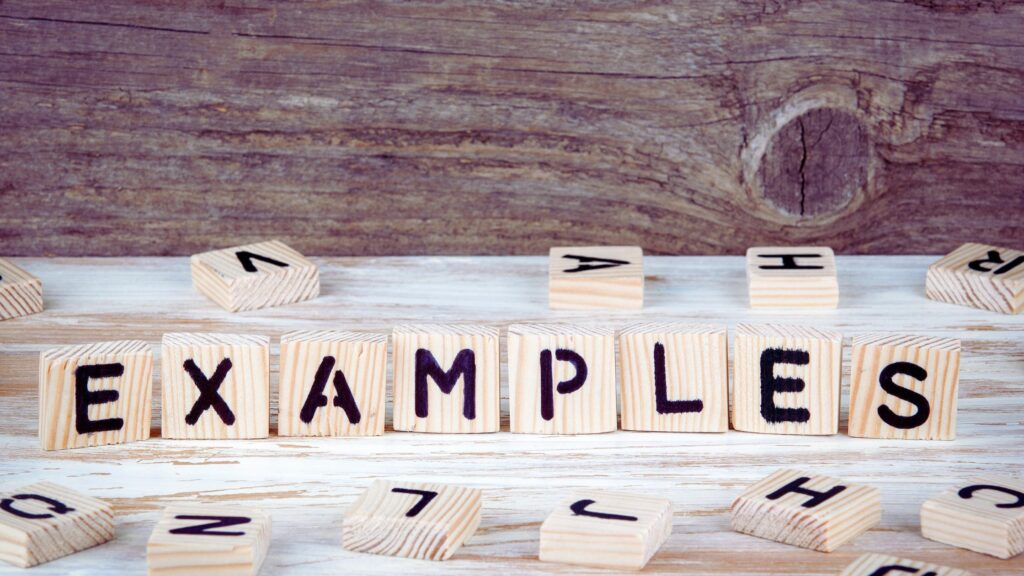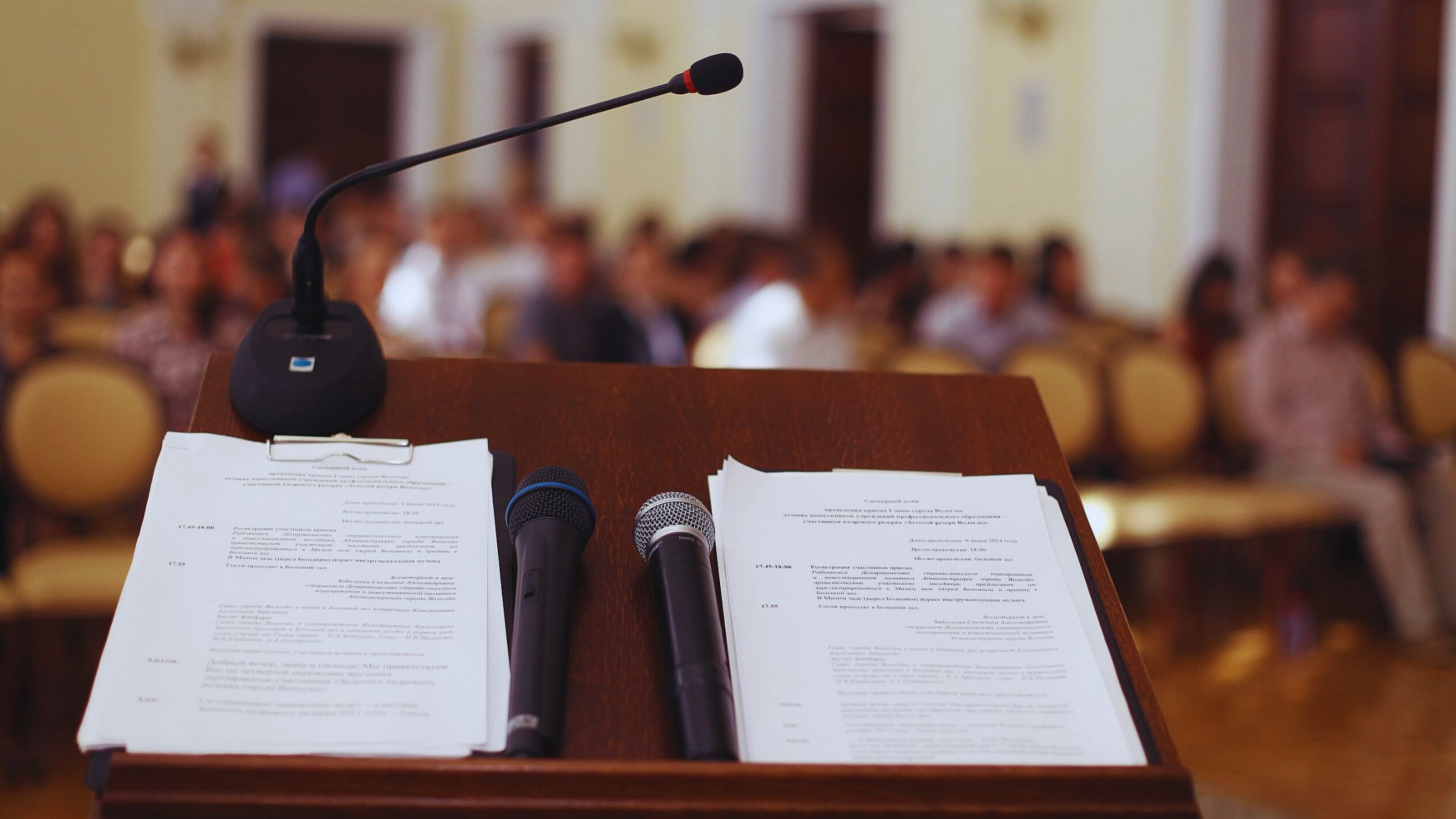Debate is a type of persuasive speaking that involves two sides, each speaking on a different side of a topic. A good debater knows how to start by greeting the audience in a compelling way and then presenting their thesis, which they will restate at the end of the talk.
Engaging in healthy and constructive debates is an essential skill in today’s complex and interconnected world. Whether discussing societal issues, exploring differing viewpoints, or honing critical thinking abilities, debates provide a platform for intellectual growth and understanding.
This article delves into practical strategies and techniques for starting a debate and creating an environment conducive to insightful conversation and respectful dialogue.
From defining clear objectives to mastering the art of persuasive opening statements, let’s uncover the keys to kickstarting engaging debates that promote intellectual exploration and mutual respect.
You should include several key elements that set the stage for your debate in your introduction: Begin with a captivating statement, anecdote, question, statistic, or quote that captures the audience’s attention and piques their interest in the topic.
Why is Good Preparation The Best Way To Start A Debate?
Good preparation is the best way to kick off a debate for several powerful reasons.
First, it helps you master the topic, gather key facts, and build strong evidence, boosting your confidence and credibility. You’ll come across as knowledgeable and authoritative, which is crucial for winning over your audience.
Second, preparation allows you to anticipate counterarguments and objections. By understanding different perspectives, you can craft well-rounded arguments and deliver persuasive rebuttals.
Third, being prepared brings structure and organization to your debate. You’ll present your points clearly and logically, making your case more compelling and easier to follow.
Finally, a solid grasp of your position lets you articulate your ideas with confidence and passion, fully engaging your audience.
In short, thorough preparation sets the stage for a successful debate, helping you present strong arguments, anticipate challenges, and communicate effectively.
What Is A Good Way To Start A Debate?
A good way to start a debate is by employing several engaging techniques that capture the audience’s attention and set the tone for a compelling discussion.
One effective approach is to begin with a captivating story relating to the topic at hand. By sharing a relatable narrative, you can connect with the audience on an emotional level and establish a personal connection.
Another effective strategy is to ask a thought-provoking rhetorical question. This prompts the audience to reflect on the topic and encourages active engagement from the start. Rhetorical questions stimulate critical thinking and create an atmosphere of curiosity, setting the stage for a spirited debate.
Using impactful statistics can also be a powerful opener. Presenting a surprising statistic related to the subject grabs attention and emphasizes the topic’s significance. This approach establishes the relevance and urgency of the debate.
Additionally, incorporating a powerful quote from a notable figure can add credibility and intrigue to your opening statement. A well-chosen quote can encapsulate the essence of your argument or introduce a unique perspective, generating interest and setting the tone for the discussion.
Employing a prop or creative visual aid can be highly effective if appropriate. Visual elements strongly impact audience engagement and can help illustrate complex ideas or reinforce key points, making your opening more memorable and persuasive.
For more detailed guidance, refer to the WikiHow article, which offers further insights and practical tips.
What Is A Greeting To Start The Debate?

A suitable greeting to start a debate is one that is respectful, professional, and engaging. Here’s an example:
“Good [morning/afternoon/evening], everyone. Welcome to today’s debate. I’m [Your Name], and I will be your moderator. Thank you all for joining us. We look forward to a spirited and respectful discussion on [debate topic]. Let’s introduce our speakers and get started.”
This greeting sets a positive tone and engages both participants and the audience.
What Are Some Examples Of Debate Greetings?
Some other examples to kick off your debate are:
- “Ladies and gentlemen, esteemed judges, and fellow debaters, I extend a warm welcome to each of you as we embark on a thought-provoking journey of intellectual discourse.”
- “Good morning/afternoon/evening, distinguished panel of judges, honorable guests, and fellow participants. It is a privilege to stand before you today and engage in a stimulating debate on [insert topic].”
- “Greetings, respected audience, esteemed adjudicators, and fellow debaters. Thank you for joining us as we delve into the complexities of [insert topic], seeking to unravel its intricacies and explore diverse perspectives.”
- “Hello, everyone, and welcome to this exciting debate in which we will explore the depths of [insert topic]. It is my pleasure to be here today alongside esteemed colleagues to engage in a spirited exchange of ideas.”
What Is A Good Opening Sentence For A Debate?
“In the realm of debate, where ideas collide, and perspectives converge, it is imperative to examine the multifaceted nuances surrounding [insert topic], which demands our unwavering attention and critical analysis.”
Other options include:
- “Ladies and gentlemen, today we gather to explore the compelling issue of [insert topic], a matter that impacts us all and deserves our thoughtful consideration.”
- “Welcome, everyone. The topic of [insert topic] is not only timely but also crucial to our society, and today we will delve into its various aspects.”
- “Thank you for joining us. The debate on [insert topic] is one that stirs passion and controversy, and we are here to dissect it from all angles.”
- “Greetings, audience and esteemed colleagues. The subject of [insert topic] poses significant questions that we must address with both intellect and empathy.”
- “Good [morning/afternoon/evening], and welcome to our debate. We are here to engage in a critical discussion on [insert topic], a topic that affects each of us in profound ways.”
- “Hello, everyone. Today, we confront the complex issue of [insert topic], and through this debate, we aim to uncover deeper truths and actionable insights.”
- “Good day, and thank you for being here. The matter of [insert topic] is one that demands our full attention and a rigorous examination of its implications.”
- “Welcome to today’s debate on [insert topic]. This topic is more than just a discussion point; it is a pivotal issue that requires our careful deliberation.”
- “Esteemed guests and fellow debaters, we are here to explore the intricate dimensions of [insert topic], a subject that calls for both reasoned argument and open-minded dialogue.”
- “Thank you for joining us. The debate over [insert topic] is essential to our understanding of [relevant context], and we look forward to a robust exchange of ideas.”
What Should You Include In Your Introduction?
You should include several key elements in your introduction that set the stage for your debate:
- Begin with a captivating statement, anecdote, question, statistic, or quote that will capture the audience’s attention and pique their interest in the topic.
- Provide a brief overview or background information about the topic to establish its relevance and significance. Set the stage by highlighting key historical, social, or cultural factors relevant to the discussion.
- Clearly state the topic or issue that will be debated, ensuring it is concise and specific. This helps to focus the debate and ensure all participants are on the same page.
- Articulate the purpose of the debate. What are the main goals or objectives you aim to achieve through the discussion? This helps to guide the debate and provide a sense of direction.
- Present your main argument or thesis statement and the central claim or viewpoint you will support throughout the debate. Make sure it is clear, concise, and well-articulated.
- Provide a brief roadmap or overview of the main points or arguments supporting your thesis to give the audience an idea of what to expect and provide a structure for the debate.
Understanding How To Start A Debate In Class

When starting a debate in a classroom setting, consider the following steps:
- Begin by clearly stating the topic of the debate through a brief explanation or a thought-provoking question focusing on the subject. Make sure the issue is relevant to the curriculum or the lesson being discussed.
- Set clear guidelines and expectations. Establish the rules of engagement for the debate, such as time limits for speakers, respectful language and behavior, and any specific guidelines for presenting arguments or rebuttals. Emphasize the importance of active listening, respect for differing points of view, and constructive dialogue.
- Organize students into debate teams or assign specific roles, such as affirmative and negative speakers. This creates a structured and balanced debate environment. Ensure each team has sufficient time for preparation.
- Give students time to conduct research and gather relevant information to support their arguments. Encourage them to use credible sources and think critically when evaluating evidence.
- Begin the debate by having each team or individual present their opening statements. This allows them to introduce both sides of the argument and set the groundwork for the discussion. Allocate equal time for each team to present their case.
- Encourage active participation and respectful exchanges between the teams. Manage the debate by moderating the speaking order, ensuring equal opportunity for all participants, and keeping the discussion focused and on track.
- After the opening statements, provide opportunities for teams to challenge each other’s arguments through rebuttals and counterarguments. This promotes critical thinking, analytical skills, and the ability to respond effectively to opposing viewpoints.
- Conclude the debate by summarizing each side’s main points and highlighting any areas of consensus or unresolved issues. Encourage students to reflect on the debate and the insights gained from it.
How Do You Start A Debate If You Are In A Hurry?
If you find yourself in a hurry to start a debate, here’s a quick and efficient way to initiate the discussion:
- Provide a brief statement or question that clearly states the topic of the debate. Keep it straightforward and direct to immediately engage the participants.
- Quickly divide the participants into teams or assign specific roles, ensuring a balanced representation of different viewpoints.
- Establish time limits for opening statements, rebuttals, and overall debate duration. Keep the time constraints concise and manageable, ensuring the debate progresses efficiently within the available timeframe.
- Prompt each team or individual to present a brief opening statement outlining their main argument or position. Encourage them to be concise and focused, allowing for efficient communication of ideas.
- Allocate a brief period for teams to offer immediate rebuttals or counterarguments to the opposing side’s opening statements. Emphasize the importance of providing succinct and impactful responses.
- Encourage participants to engage in concise exchanges while ensuring the debate remains respectful and on-topic. Facilitate brief opportunities for teams to respond to each other’s arguments, maintaining a fast-paced flow.
- Dedicate a moment to briefly summarize the main points raised by each side, acknowledging any areas of agreement or key disagreements. Provide a quick wrap-up to conclude the debate.
How Do You Start And End A Debate?
To start and end a debate speech effectively, follow these general guidelines:
Beginning A Debate Speech
- Begin with a strong and attention-grabbing opening statement, such as a relevant quote, rhetorical question, or compelling statistic, to engage the audience and establish the context of the debate.
- Address the audience, judges, and fellow debaters respectfully, acknowledging their presence and the importance of the topic being discussed.
- Clearly state your team’s position or stance on the topic to provide a clear framework for your arguments and help the audience understand your perspective.
- Provide a concise overview of the main arguments you will present supporting your position. This preview gives the audience a roadmap of what to expect during your speech.
Ending A Debate Speech
- Briefly recap the key arguments you presented during your speech. Restate them concisely and compellingly, reinforcing their relevance and importance.
- Acknowledge and address the main points raised by the opposing team. Offer concise rebuttals or counterarguments to strengthen your position and demonstrate critical thinking in the face of opposing arguments.
- End your speech with a strong closing statement that emphasizes the significance of your position and leaves a lasting impact on the audience. You can use a memorable quote, a call to action, or a thought-provoking statement.
Remember, your debate speech’s specific content and structure will depend on the format, topic, and assigned role (e.g., first speaker, second speaker, etc.). Tailor your approach to align with the guidelines and expectations of the specific debate setting.
How To Start A Debate As A Second Speaker
Sometimes, you’ll find yourself in a situation where you have to follow a previous speaker who has spent a few minutes providing the audience with their point of view on the topic in question. Let’s assume the first speaker has laid the groundwork, but now the debate really heats up when you take the microphone. As the second speaker, your role is not just important; it’s pivotal. You hold the power to shape the direction of the debate, and your words have the potential to sway the audience. Here’s how to grab their attention:
- Acknowledge the First Speaker: Briefly thank them for their points to show you’ve been listening. This is not just a courtesy but a strategic move to establish a respectful tone.
- Bridge and Refocus: Connect their arguments to yours, then subtly shift the focus to reflect your stance on the topic in question.
- Highlight Weaknesses: Identify inconsistencies or gaps in the opposition’s case. Don’t be rude, but politely point out where their logic crumbles.
- Preview Your Points: End with a clear roadmap of what you’ll address, building anticipation for your arguments.
By following these proven steps, you’ll establish yourself as a strong opponent, ready to dismantle the other side’s case and build your own, confident that these strategies will work.
What Are Some Good Debate Topics?
Here are some good debate topics that cover a range of areas related to debating skills, public speaking, and various aspects of debates.
These topics offer opportunities to explore different facets of debating, public speaking, and debate competitions. They can spark engaging discussions and allow participants to develop their speaking skills while also considering different perspectives and arguments:
- Should public speaking be included as a mandatory course in the school curriculum?
- Is formal debate an effective way to develop critical thinking skills?
- Should debate competitions focus more on collaboration and teamwork rather than individual performance?
- Is body language more influential than verbal communication in a debate?
- Should beginners be encouraged to participate in competitive debates or start with informal practice sessions?
- Is parliamentary debate a more effective format than traditional formal debate?
- Should high schools prioritize debate programs as an essential extracurricular activity?
- Is eye contact an essential aspect of persuasive public speaking?
- Should hand gestures be regulated or restricted during formal debates?
- Should affirmative teams be given additional responsibilities in a debate to encourage innovative approaches?
- Is there a preferred debate format that should be universally adopted for all competitive debates?
- Should debate introductions be concise and to the point or include more detailed contextual information?
- Are third speakers in debates undervalued or underutilized?
- Should there be specific guidelines for timekeepers in debates to ensure fairness and accuracy?
- Is it beneficial to have a variety of debate formats to cater to different styles and preferences?
Closing Thoughts
Mastering the art of debate is about more than just arguing a point—it’s about engaging with ideas, understanding different perspectives, and communicating effectively. By greeting your audience compellingly, thoroughly preparing, and employing strategic techniques, you can excel in any debate setting.
Whether you’re a novice or an experienced debater, the skills you develop through debating will serve you well in many areas of life. So, embrace the challenge, enjoy the process, and let your voice be heard. Happy debating!

